A business case captures the reasoning for initiating a project or task. By definition, it can be stated as;
A business case provides justification to management or stakeholders as to why a project or program should be implemented.
It determines whether a proposed project justifies an investment by the organization. It defines the problem and its impact and carries out a cost-benefit analysis (CBA) for the proposed solution. This also looks at potential alternative solutions and checks whether the project aligns with the company’s strategic plans.
These cases give the reader a blueprint of what to expect from your project and about your organization. Besides, it forecasts the project costs, benefits, and associated risks so that decision-makers can decide whether it is worthwhile to pursue and why choosing one strategy is better than others.
note
A good business case not only captures but documents why starting a new project makes sense.
It is a technical working document that requires meticulous planning. The case serves a particular need and must be written according to some standards.
Here are several factors to note:
- A business case is essential when you need to justify project expenditure or resources from the management or sponsors. For example, funds authorization may come from the IT department while the resources come from the Finance Department.
- When it comes to the size, there is no magic formula. The size is irrelevant. What matters is that it provides all the vital information that facilitates decision-making by management. However, brevity is a virtue. Use your judgement and do not overwhelm the reader while yet providing enough information.
Many people get confused between a business case and a project purpose. A case is essentially a request for funding or a sales pitch to the investment or management board. On the other hand,
A project charter/purpose is formal documentation that captures how an initiative will be managed.
It’s a list of initial project assumptions, the risk, issues, project scope, and high-level timeline, among other aspects. A case is a precursor to the development of a project purpose and plan in a business.
Free Templates and Examples
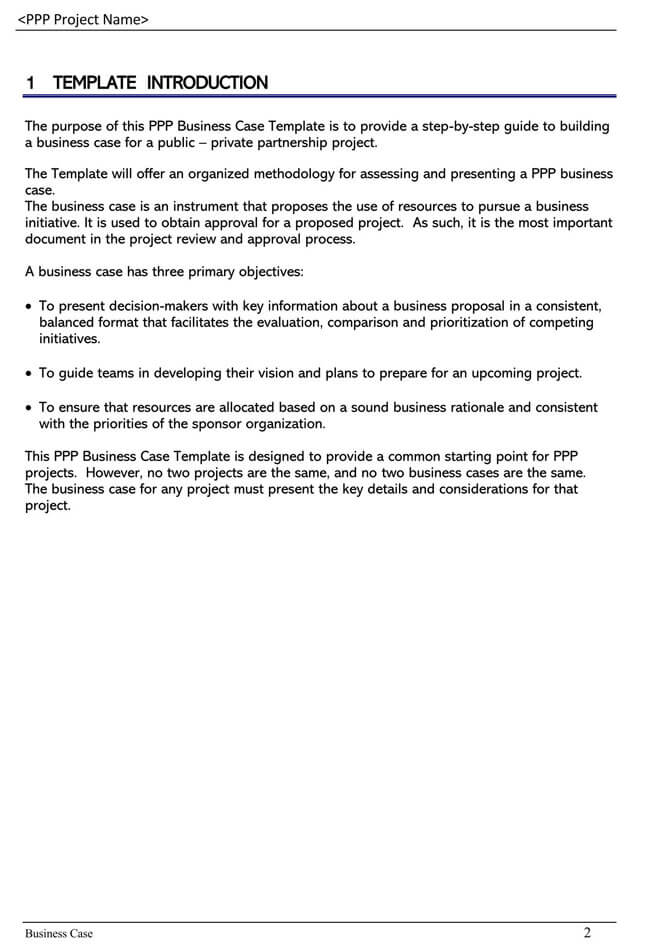
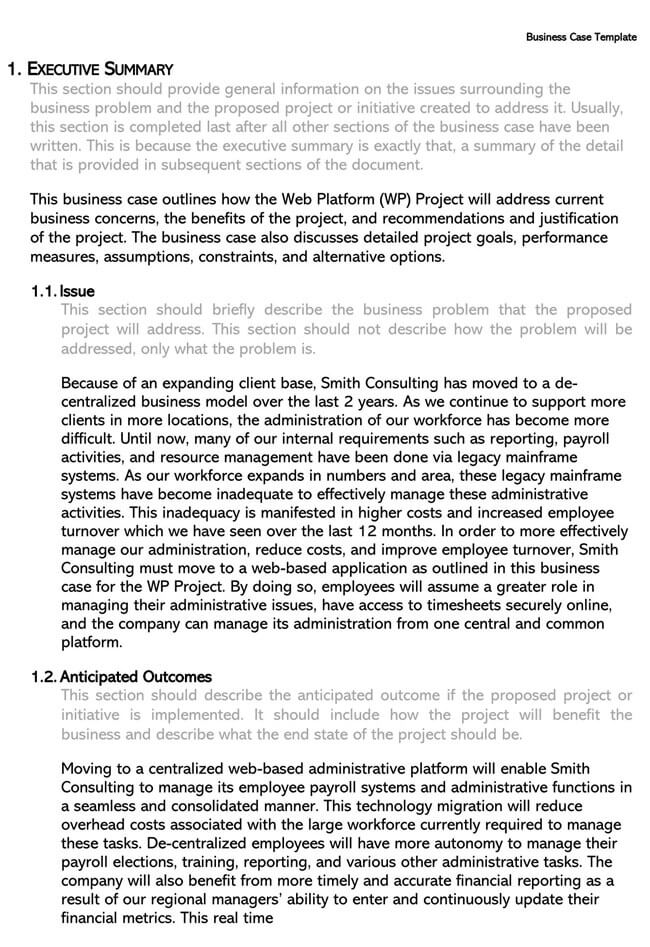
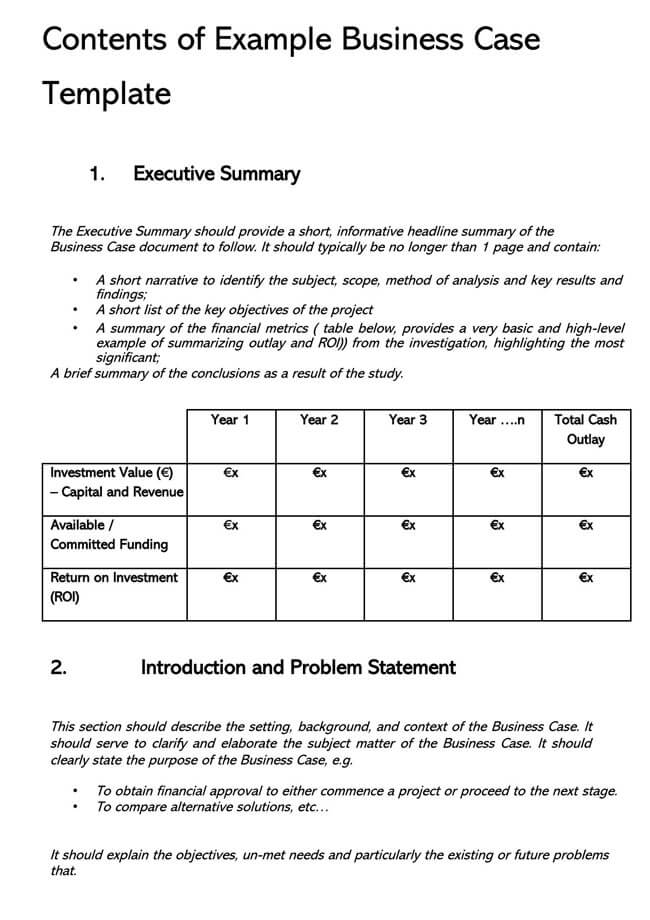
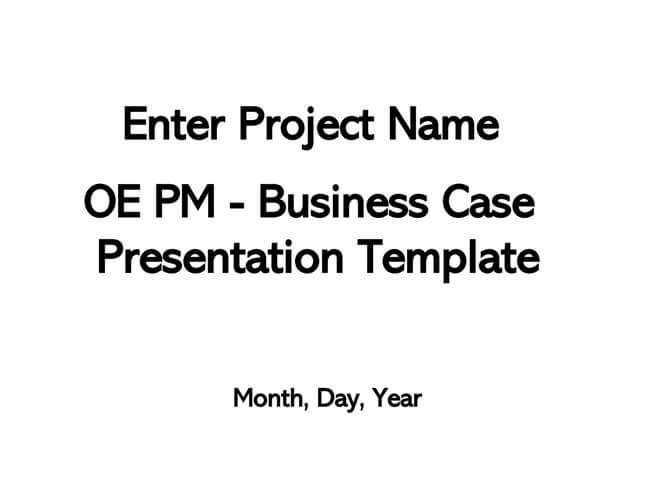
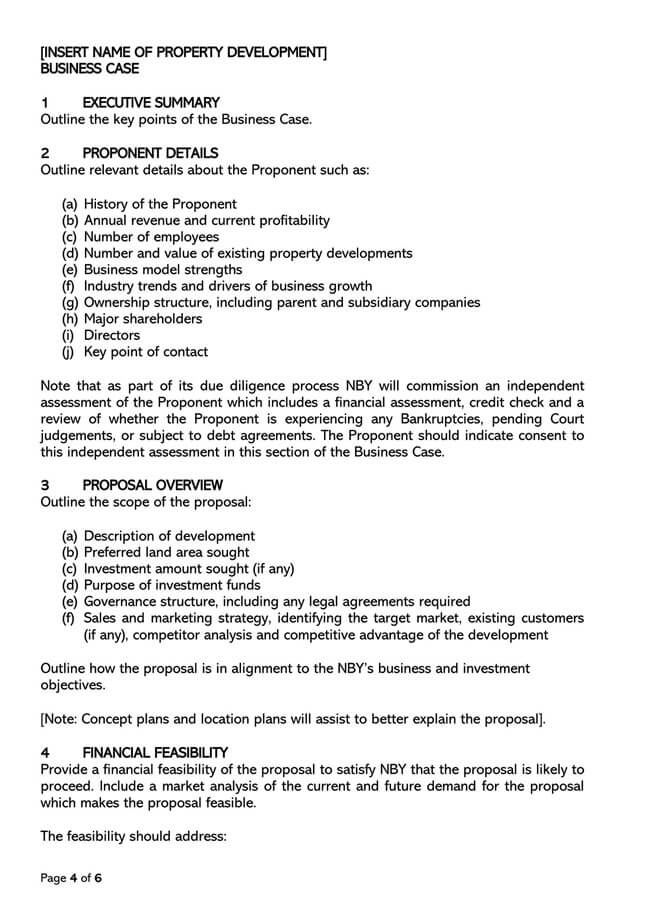
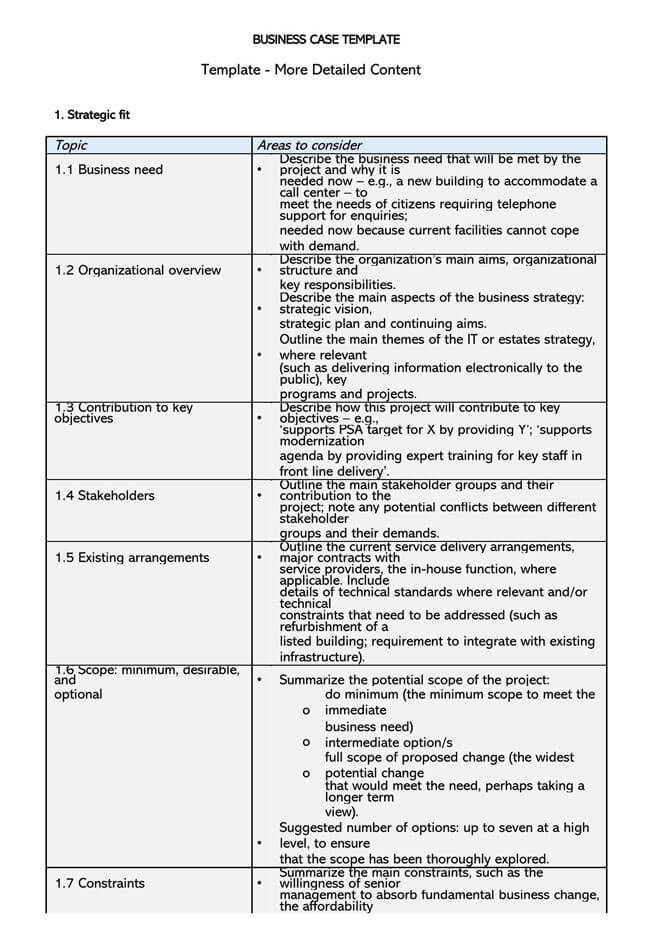
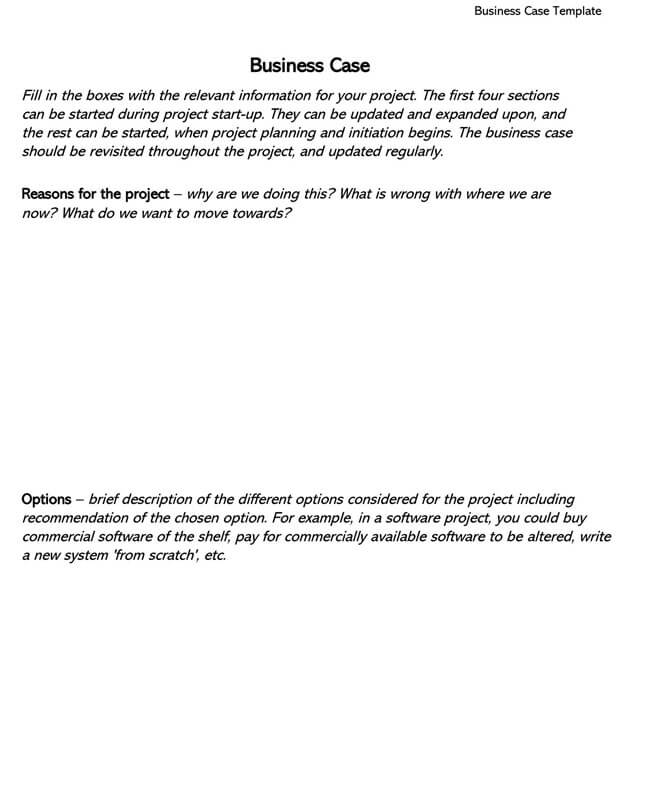
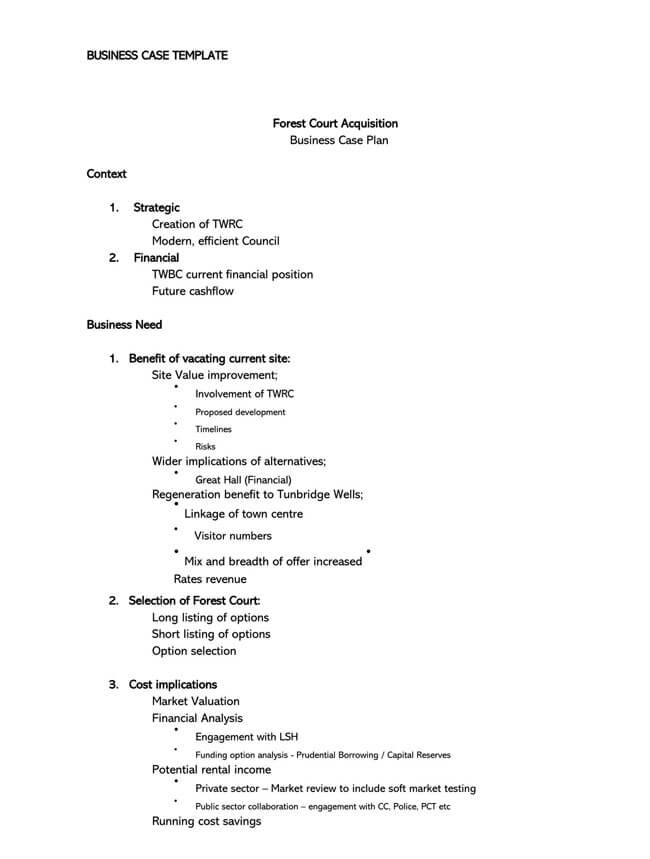
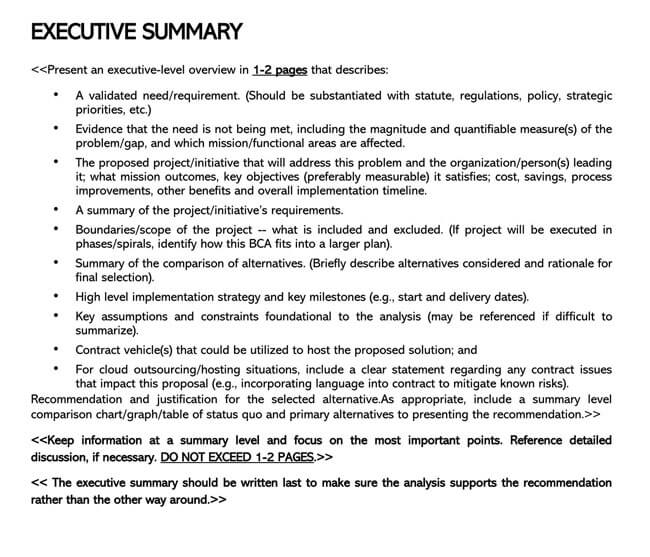
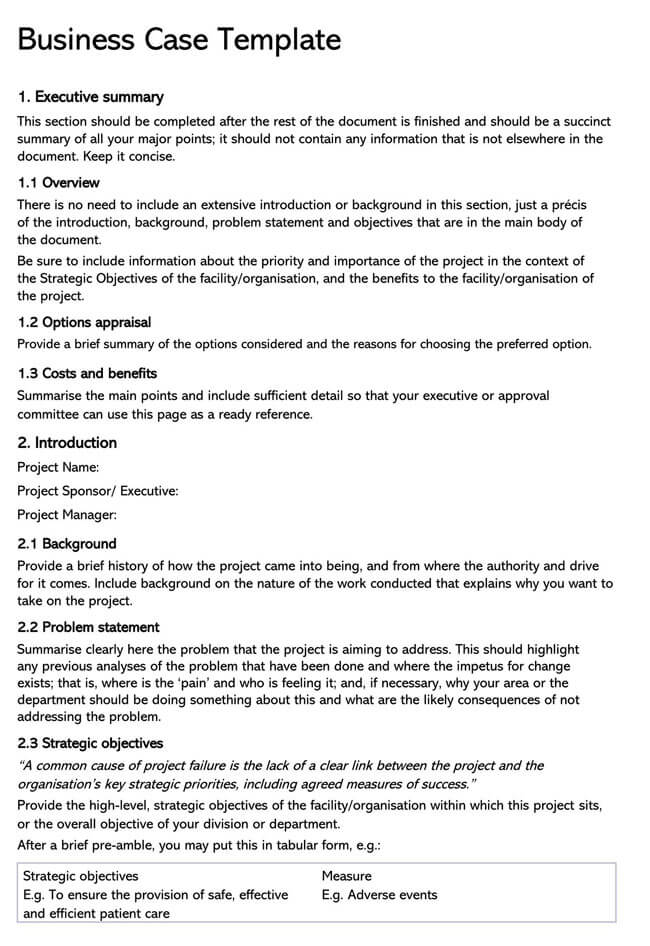
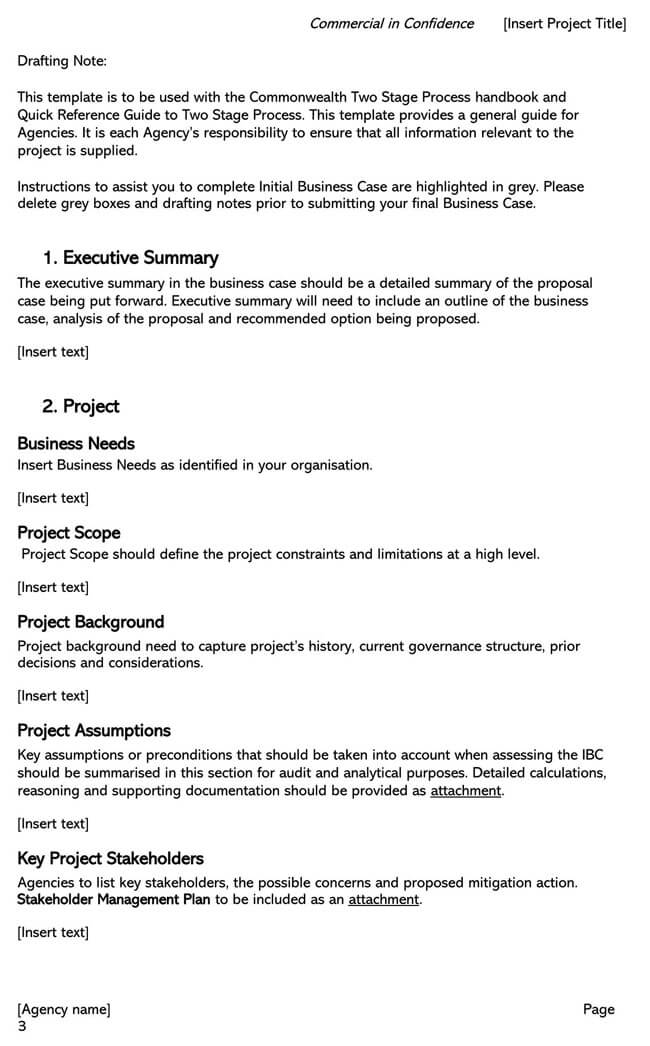
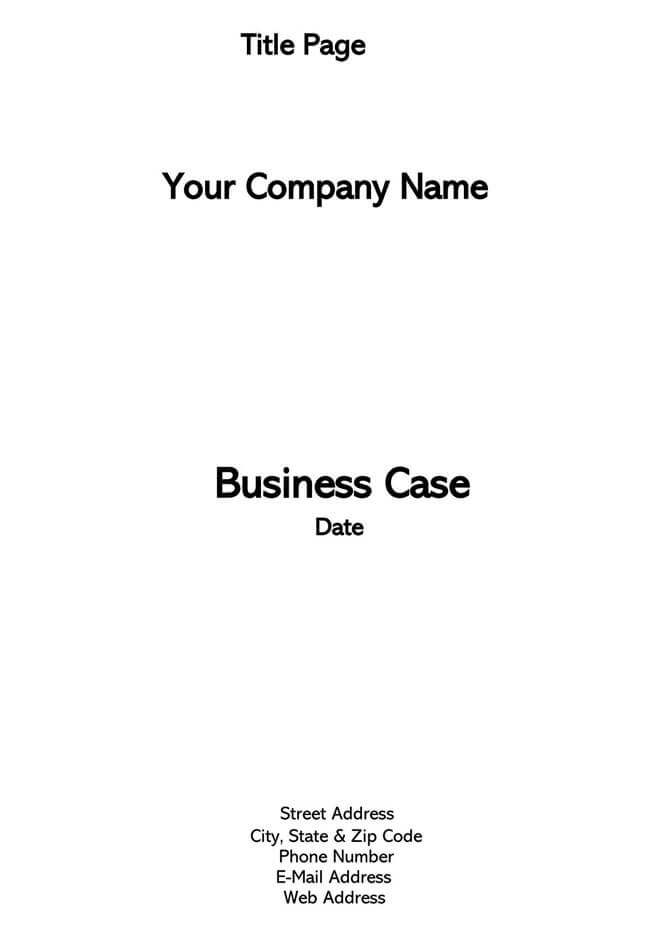
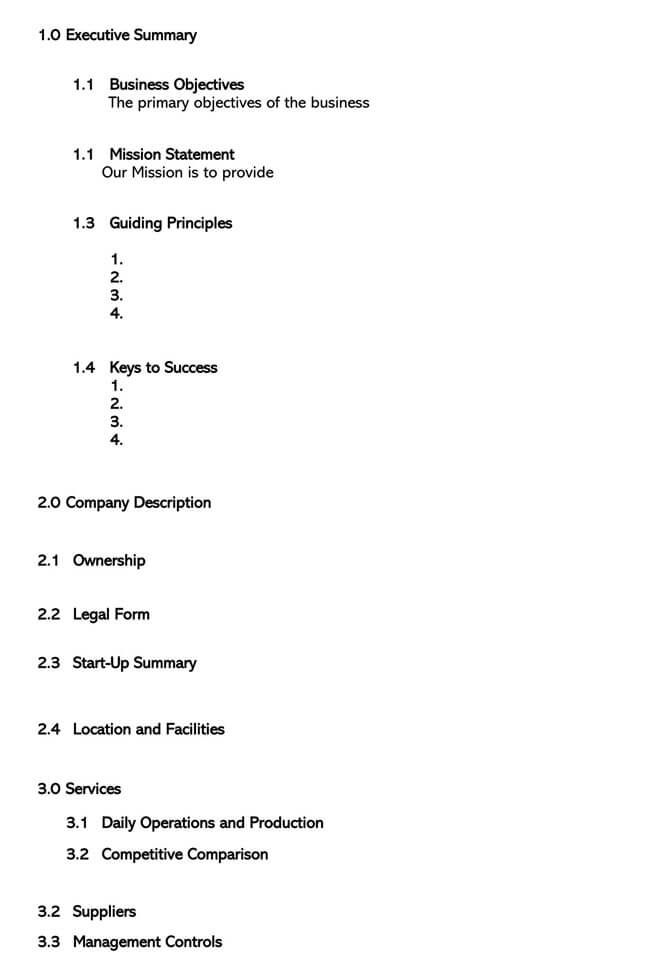
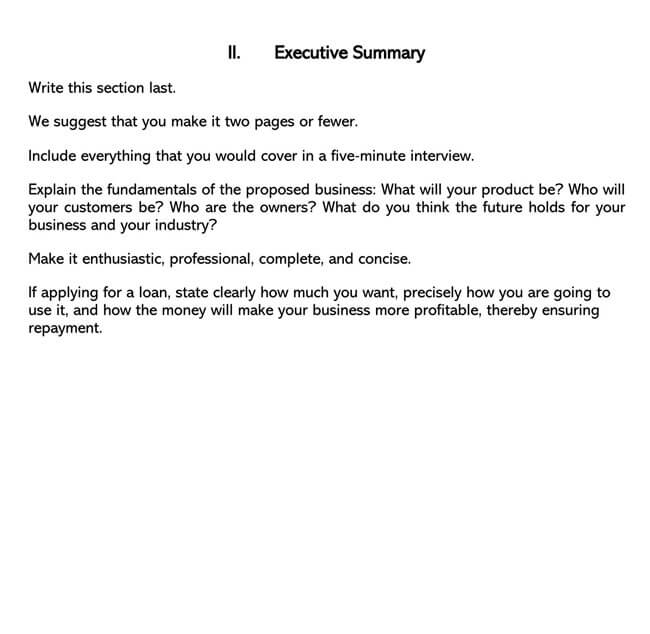
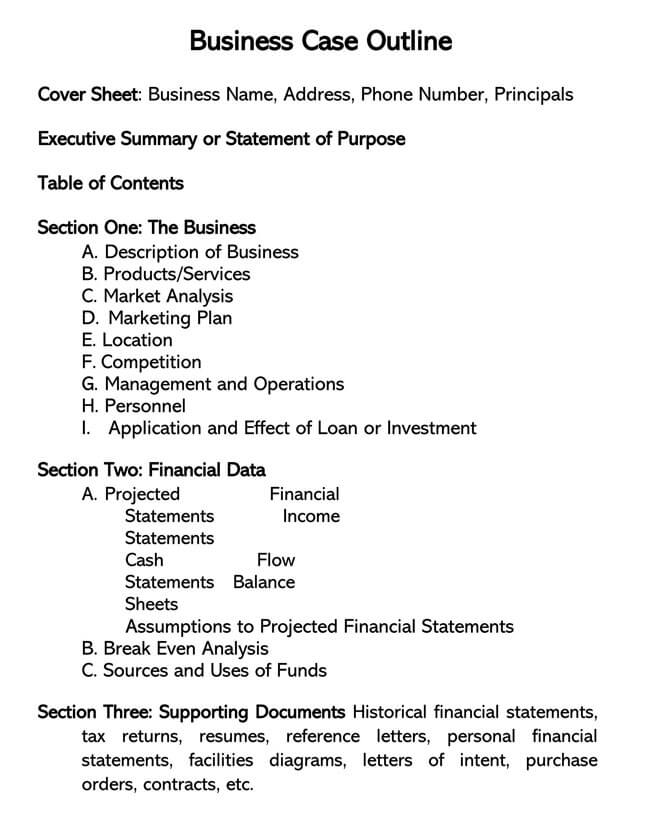
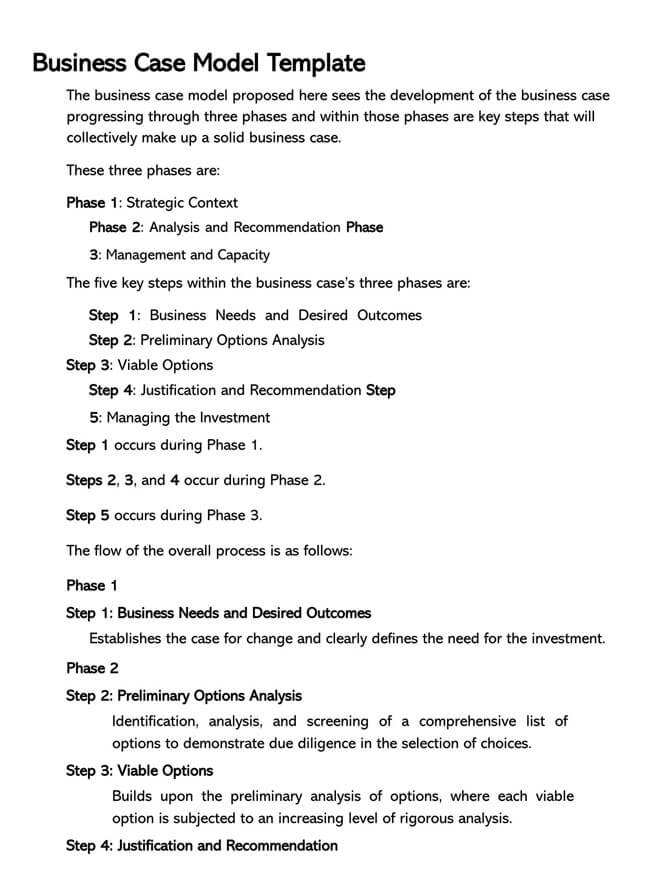
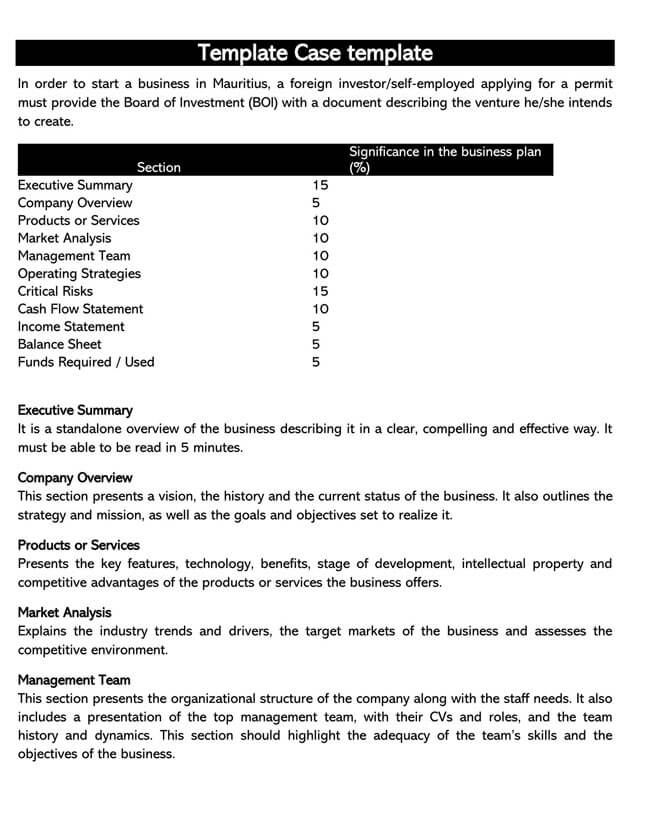
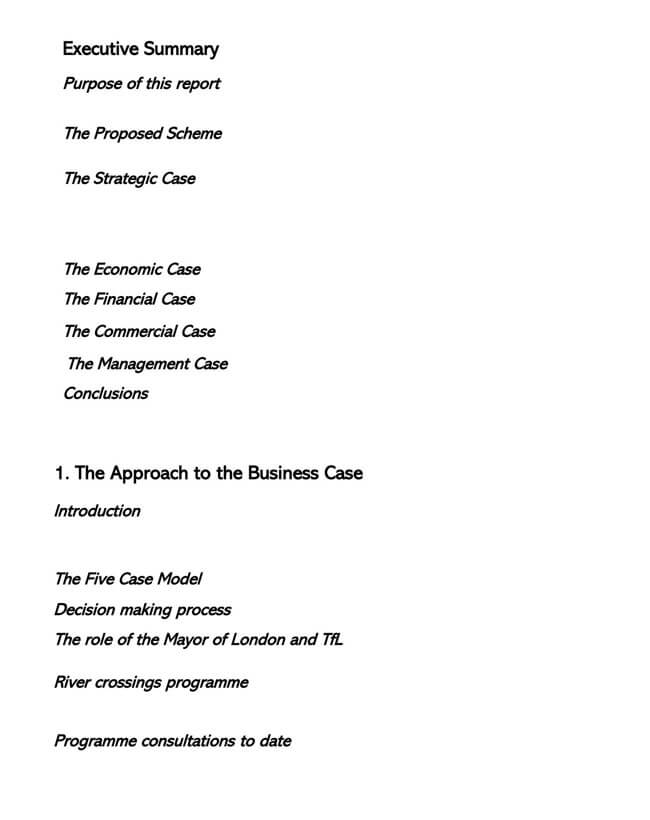
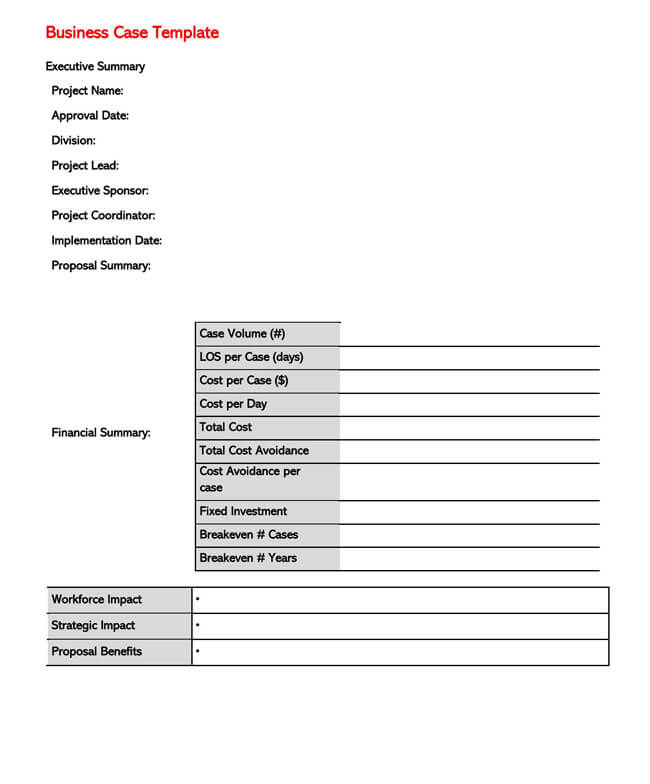
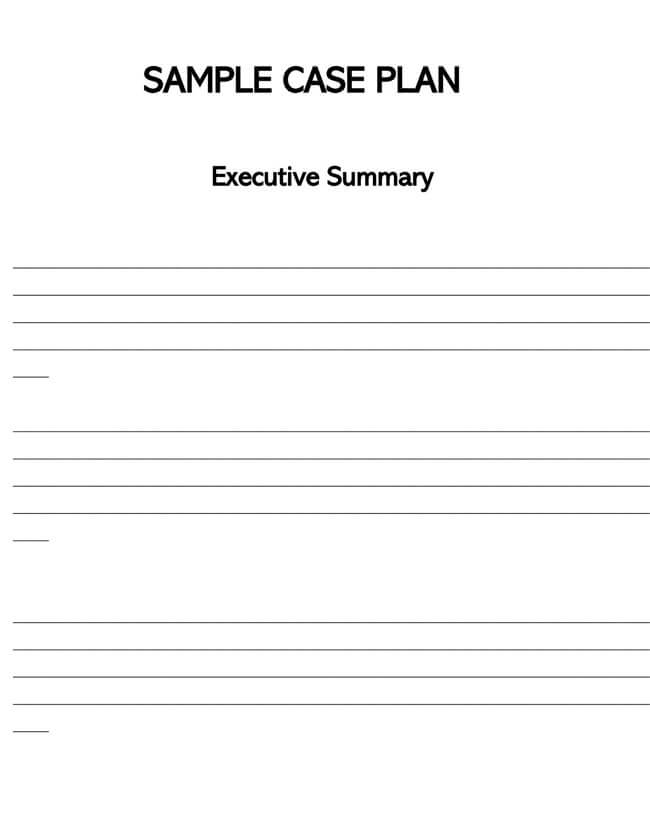
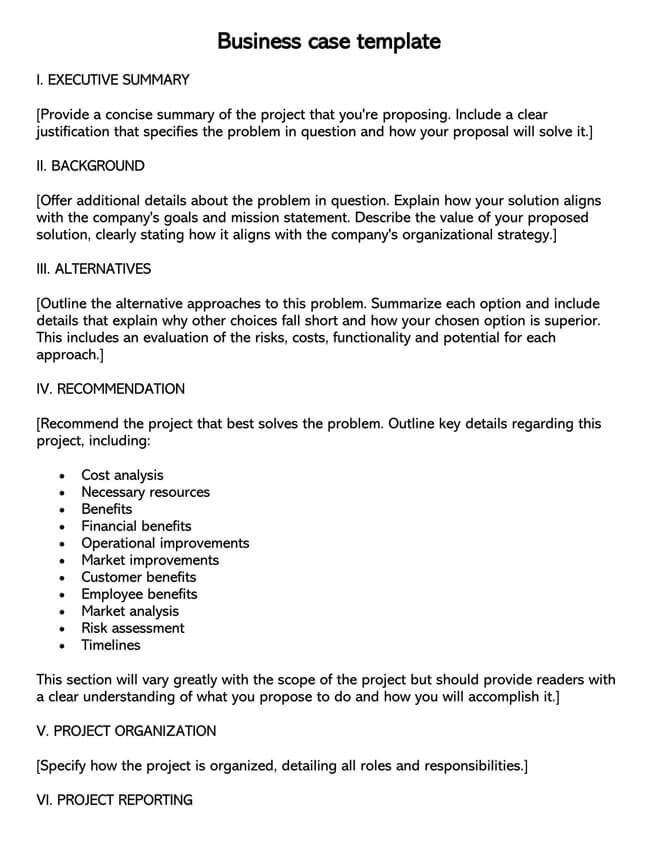
Benefits
Through a business case, you show investors and key stakeholders exactly how you intend to change the status quo, solve a problem, and change the course of action. It helps to change direction in time.
- The principal role is to communicate to different audiences. It is a tool that presents your project to those who can fund it. It helps you sell your idea in a language that the target audience can easily understand to facilitate decision-making.
- It is to prove to stakeholders, your client, or the customer that the idea being pitched is a sound investment worth exploring and that effort and research have gone into the project.
- It acts as a foundation for the submission of additional support documents. Depending on the proposed business change scope and scale, you may need to develop the business case further as part of a detailed ongoing investigation. Therefore, your case should be developed incrementally so that resources and time are not unnecessarily wasted on aspects that are not practical.
- It helps you to measure your success rate. As you work on it, focus on your proposed solutions and ensure that they can be evaluated or measured. It is a blueprint of how you will continually work toward the objective throughout the project.
- It brings together the advantages, disadvantages, risks, and costs of the current situation and the proposed vision so that management can decide if your project should proceed.
Writing a Business Case
Many projects fail because they lack a solid case, hence why you must invest in a good one.
The following are recommended steps when writing it:
Identify the problem
Begin with a clear problem that needs to be solved and then justify the need to develop a solution. Include any relevant research that might assist in framing the problem. Ensure you draw a strong connection between the problem, solution to the goals or mission of the organization or company.
Go for alternative solutions
Generally, most problems tend to have multiple solutions, and therefore, an options appraisal is needed. List several alternatives or options you looked at, complete with their benefits, risks, and cost assessment. Show how the alternatives align with the current strategy, vision, and priorities.
Choose the ideal solution
The final one might contain 3-5 options. State your preferred option and why your solution is the best option. You must develop a compelling argument as to why this solution is better than all the others in your short-list. Perhaps this is the quickest, most affordable, or most profitable alternative.
Write an executive summary
Even though the Executive Summary appears first in the case or plan, you should write it last so that you can condense or summarize the essential ideas from the other sections. Your Executive Summary should succinctly convey the most vital information about the proposed strategy and effectively communicate your entire story to the intended reader.
remember
First impressions are important, and you must get this right!
The executive summary outlines all your vital business information within a relatively short space, usually on a single page. It’s essentially a high-level peek at everything; it summarizes all the other sections of the case. In short, the Executive Summary is an overview of your entire case.
Craft the financial portion
The finance section primarily addresses those who make the funding approval and is one of the most critical components.
Financial appraisal
When preparing the financial appraisal, you may want to seek guidance from the finance department on content and presentation.
The purpose is to:
- Identify the project’s financial implications
- Allow for the comparison of costs against the forecasted project benefits
- Make sure the initiative or project is affordable
- Assess the project’s value for money
- Predict the cash flow.
Sensitivity analysis
This part analyses concerns about project risk. Sensitivity analysis looks at alternative futures by estimating the impact on project assumptions or outcomes of changing values where there is uncertainty. It allows the accountant to experiment with potential scenarios.
Describe the project scope
Each case and project is different, and the scope will differ. The scope of your case will depend on the nature of your proposed project or initiative.
It includes:
Project definition
This is typically the largest section. It addresses the project sponsor, project team and stakeholders.
This answers:
- The why,
- The what, and,
- The hows about your project.
Background information
The purpose is to give a well-articulated introduction to the business project. This section should have a brief overview of why the change has become necessary. It captures the problem, available opportunity, or the changed circumstances. Refer to related studies, previous programs/projects, or similar business cases/plans.
Objective
The objective describes why you are undertaking the project.
It answers specifics such as:
- What’s your goal?
- What do you need to overcome the stated problem?
- How will the initiative support the overall business strategy?
Benefits and limitations
This section describes both the financial and non-financial benefits. The section explains why the project or initiative is needed. The project limitations should also be captured in this section as these pose a potential risk to your project.
Reasons include:
- Improving project quality
- Saving project costs through efficiencies
- Reducing or saving on working capital
- Generating or boosting revenue
- To sustain competitiveness edge
- Boosting user experience and customer service
- To align activities to business or corporate strategy.
Option selection description
Identify potential solutions and describe them for the audience to understand. Explain in sufficient detail the project chosen and why this is the best available solution. Also, address the risks that come with this recommendation.
Outline the plan
This section summarizes the main project activities and your overall timescale ― project schedule for the initiative. Determine how long each phase will take and the estimated date of completion. Your timeline should be divided into manageable sections that clearly articulate what will happen during each project phase.
The outline section should also be used to answer:
- What is required?
- How is it done?
- Who does what?
This section lists the project’s major deliverables. It should have a brief project description and accountabilities for every activity. This includes describing resource requests that are backed by solid reasons and your plans for project management. Include process improvement methodologies and tools for tracking and process automation.
Market and risk assessments
After identifying and defining a real need for your project, perform relevant market research. Are there any initiatives similar to yours done previously? If yes, explain what makes yours different. If not, this gives you a unique opportunity.
When mentioning similar-sounding past ventures that failed, describe why and how your initiative will overcome the issues they faced. When you cite one that succeeded, explain how yours will leverage its past success while still maintaining your uniqueness.
Create a SWOT analysis chart to help you organize thoughts and highlight your project’s strengths and weaknesses. Other risk factors to consider include investment risk and liquidity risk. The bottom line is that any business comes with the risk of losing some of the investment or all of it. ,
A good case should, therefore, demonstrate a strong vision that is backed up by solid market research and a cost-benefit analysis.
Project approach
The project approach explains how you will tackle the project; the way work is done to deliver the deliverables.
EXAMPLE
A project where much of the work is contracted out will assume a different approach from a project that designs or develops a home-based, in-house solution.
Purchasing strategy
This section describes how the project will be financed. It looks into aspects such as whether to buy, outsource, or lease what the project requires.
Project organization
Explain who is responsible for governance and working on the project. Clearly outline the project’s reporting structure and explain both who the reporting will be made to during the project’s life and what kind of information will be provided. Specify the metrics to be used in measuring project progress or determining success.
It includes:
Project governance
The governance section explains the structure of the project and the different levels of decision making. Most businesses already have a project management process framework that supports the new initiative through each phase or stage.
The sections to include are:
- Roles and responsibilities ( RACI Chart)
- Project tolerances and limits
- Standards to be observed or maintained
- Project review points
- How project decisions are made and implemented.
Process reporting
It must define how it records project progress. This is to keep the project board updated throughout the life of the project. This is usually the responsibility of the project manager, who prepares progress reports at regular intervals.
- What is the final product you are hoping to create?
- How will you measure success with your deliverable?

Managing Business Case
The completed case is meant to provide structure for the initiative and project organization throughout the project’s lifestyle. Therefore, it should be used routinely as the reference point and not left to gather dust on a shelf. The project board and sponsor should routinely review and update the document at key stages to ensure the project remains viable and that the reasons for implementation are still valid.
Professional Keys to Success in the Process
The purpose of a good case is to communicate. Each section should, therefore, be written in a language understood by the intended audience. It should only contain such information that helps decision-making.
The professional keys to success include:
- Be brief and only convey the basics
- Make it concise, clear, and interesting for the readers
- Use numbers and statistics to back your case. Numbers are persuasive
- Minimize jargon and eliminate conjecture
- Describe and explain your plans and vision
- Demonstrate the benefits your initiative/project brings
- Ensure readability and consistent style.
Frequently Asked Questions
Choose a traditional font and standard template. Ensure the font is easily read. Make it look presentable.
That will depend on what you want to achieve in your case. You can have a “Three” or “Five Year Business Plan” if you intend to make such financial projections in your case or plan.
A well-articulated case should be brief, concise and to the point. Small project business cases may be a few pages only. Complex and larger projects will be large.
Final Words
The purpose of writing a business case is to outline the rationale for undertaking a proposed initiative and providing a means of continually assessing/evaluating project progress. These cases show those in decision-making positions that there is effort and commitment behind certain lines of action.












